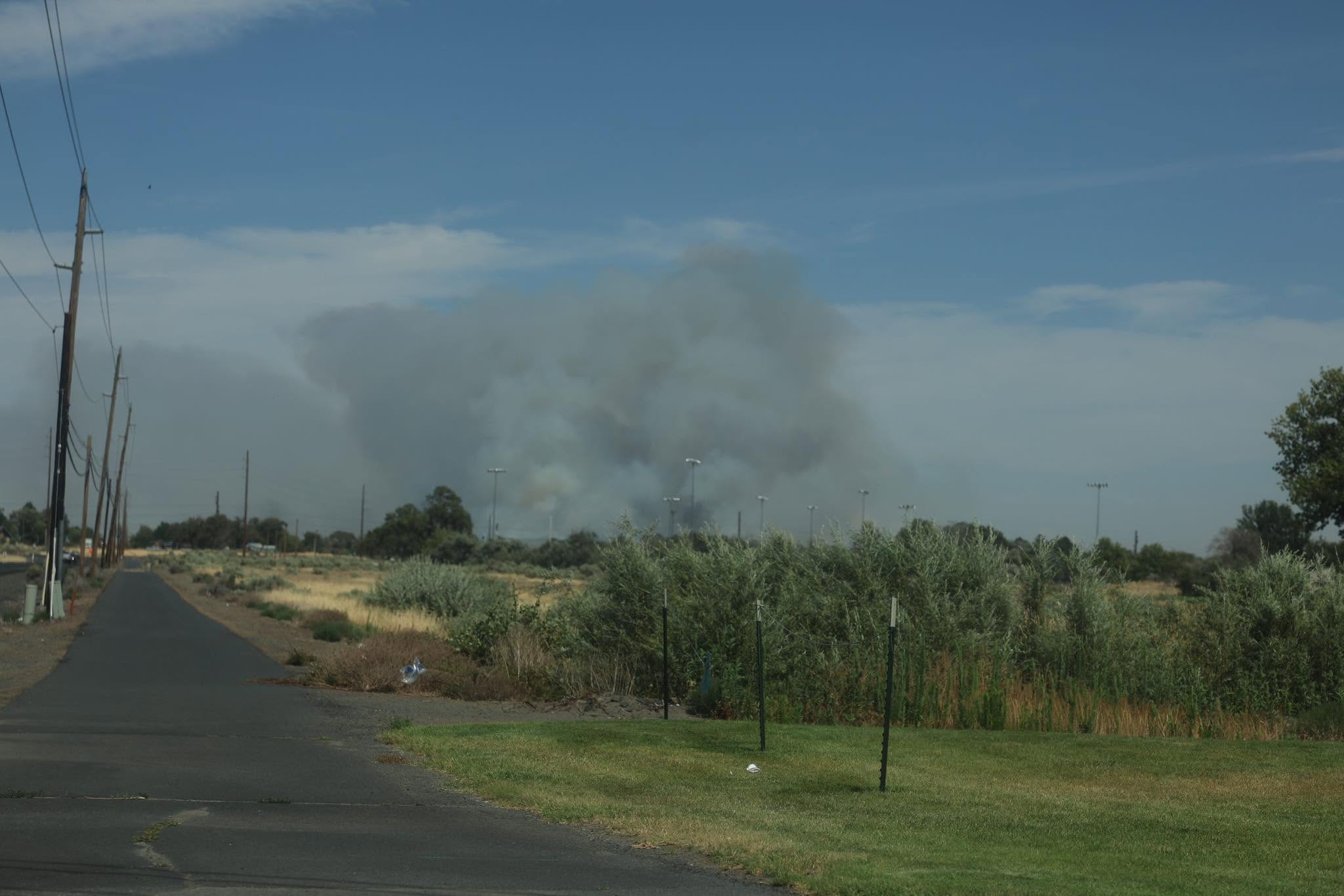Final victory: World War II, 75 years later
Published 8:00 am Monday, August 31, 2020

- Tillamook Naval Air Station Dirigible Hangar B as seen from the air while it was under construction, in the summer of 1943.
BEND — In July 1945, Leon Devereaux was a Navy ensign flying a 4JU Corsair fighter, shooting down a Mitsubishi “Betty” bomber off the coast of Japan.
Less than two months later, Devereaux was again on a mission above Japan, flying over a battleship in Tokyo Bay. His Corsair was part of the air armada above the USS Missouri, where Japan was signing the documents of surrender.
It was Sept. 2, 1945. The end of World War II.
“That was fast — we weren’t expecting the war to be over yet,” Devereaux said. “We knew there was a hard-nosed bunch in Tokyo wanted to keep fighting.”
It had been just that spring that Germany had surrendered. Still, there was one more enemy to go. The path to victory over Japan was clear — but the cost of D-Day-style invasions would be long and bloody. President Harry Truman would say after the war that “Operation Downfall” would have lasted well into 1946 and cost up to a half-million American lives — an overestimation, according to some post-war military historians.
Then two flashes changed the timetable. The atomic bombing of Hiroshima and Nagasaki in early August 1945 incinerated two major Japanese cities, killing at least 110,000. Higher estimates are double the number. It would cause Emperor Hirohito to overrule military hardliners and capitulate to the Allies.
Just under four years of war cost 407,316 Americans killed and 671,278 wounded. Of the 150,000 Oregonians who served, an estimated 3,800 died and more than 5,000 were wounded. While estimates vary, the death toll of military and civilians during the war was about 75 million.
Marching into history
Devereaux, 97, who would go on to serve as Bend’s mayor, is among the rapidly dwindling number of Americans for whom service in World War II isn’t something in history book, but part of their life’s memories.
Of the estimated 16 million who served in World War II, less than 300,000 remain, down from more than 935,000 in just the past five years. In Oregon, just 7,300 veterans remain. Each day more than 200 veterans of the war die across the nation. Obituaries tell the toll.
“After graduation from Astoria High School in 1943, he enlisted in the Navy and served his country in the Pacific Theater during World War II,” reported The Astorian on the April death of Donald Bryce Hoyer, 94, of Seaside.
It’s a daily fact of life.
“In Oregon, we lose three or four World War II veterans every day,” said Dick Tobiason, a Vietnam veteran in Bend active in state efforts to memorialize World War II in Oregon.
Bob Stangier was fairly certain he would have added to those casualty numbers if the fighting had continued. World War II had taken him from Pendleton to Corsica, then Italy, flying 70 missions as a pilot of B-25 Mitchell bomber. His plane was badly damaged on a raid and limped home to its base in Allied-occupied Italy on one engine. When the end of the war came, Stangier was a first lieutenant at Santa Ana Army Air Base in California, on his way to the Pacific.
“I had been in combat and was apprehensive about going back,” Stangier said. “I was in the Army. They told you where to go and what to do, so I was in the pipeline to the Pacific.”
“Gen. MacArthur said we could take Japan with just a few thousands of loses, but another general said we could lose a million or more,” Stangier said. “I had no confidence in MacArthur’s math.”
That even MacArthur’s estimate was wildly high was only because of the atomic bomb, Stangier said.
“I believe I am alive because of the atomic bombs,” Stangier said. “These idiots who are against it should have been in the Army in 1945.”
Small state plays a big role
For a state of just over 1 million people at the time, Oregon played a leading role in the history of World War II.
Yōsuke Matsuoka, Japan’s foreign minister who negotiated the 1940 alliance with Nazi Germany and fascist Italy, once lived in Portland and was a 1900 graduate of the University of Oregon Law School. Charged with war crimes, he died of tuberculosis in a Tokyo prison in 1946 before the end of his trial.
Fort Stevens at the mouth of the Columbia River was the only military base on the continental United States to be attacked. The Japanese submarine I-25 surfaced at night in June 1942 and fired 17 shells from its deck gun, blowing up the fort’s baseball field backstop but little else.
Brookings was the scene of the only enemy bombing of the war, when the same submarine launched a seaplane armed with incendiary bombs meant to set off a forest fire that would draw troops away from military missions. A small area was scorched, but no blaze erupted. Nubuo Fujita, the pilot, would return after the war to apologize to the resident of Brookings, give the town his family’s samurai sword and plant a peace tree where the bombs fell.
Klamath County was the site of the only American casualties of an enemy attack in the United States. Japan launched 9,000 balloon bombs late in the war, designed to float across the Pacific Ocean with the hope, again, of igniting forest fires.
One bomb went off in January 1945 in a rural area near Medford to no effect. But on May 5, 1945, a church group on a picnic at Leonard Creek, 13 miles northeast of Bly, found one. It blew up, killing Elsie Mitchell, 26, and five children aged 11 to 14.
A memorial was erected in 1950, with Gov. Douglas McKay saying those killed were casualties of World War II “just as surely as if they had been in uniform.”
World War II was the largest and deadliest conflict in history. The war was fought on every continent except Antarctica. Up to 60 million people died.
Began
Sept. 1, 1939, with the German invasion of Poland
Ended
Sept. 2, 1945, with the Japanese surrender in Tokyo
Alliances
There were two main alliances:
Allies: Britain, France, Soviet Union, United States, China
Axis: Germany, Italy, Japan
Long War
The war is traditionally given the September 1939-September 1945 time frame, but China and Japan were fighting as early as 1931. The U.S. did not enter the war until December 1941.
Total Dead
35 million to 60 million.
A wide swing in estimates is due to the large number of civilian casualties in areas, such as Eastern Europe and China, where post-war records are considered undercounts.
Military
More than 20 million military members died around the world.
About 15 million were direct combat deaths, with 25 million combat wounded, as counted by lower-end estimates compiled by researchers from the National World War II Museum. Total military deaths (including combat) of major participants: Soviet Union: 8.8 million Germany: 5.5 million China: 3 million Japan: 2.1 million United States: 407,316 United Kingdom: 383,600 Italy: 301,400 France: 217,600
Holocaust
Nazis killed about 5.9 million European Jewish civilians, nearly two-thirds of the pre-war population.
150,000
Oregonians served in World War II.
3,832
of them were killed. were killed.
770
Oregonians became prisoners of war. By war’s end, 598 had returnedto Allied forces and 172 died in captivity.
887
Oregon service members from World War II listed as missing in action and presumed dead. They include Army Pvt. Elmer E. Fryar, 29, of Portland, a Medal of Honor recipient.
981
service members from Oregon were buried overseas in American Battle Monuments Commission cemeteries overseas. Together with the 887 MIAs, they represent almost half of Oregon’s total war dead.









